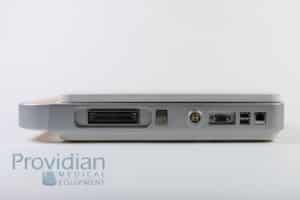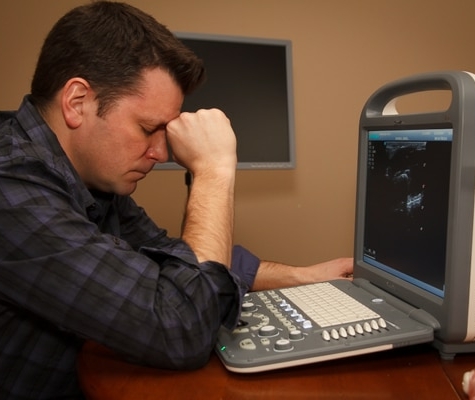I can’t really declare that something is the “Best” portable ultrasound machine out there. What’s best for some, isn’t necessarily for others. Those “others” may strongly disagree with my assessment.
That being said, it’s a safe claim that anyone who has used the Philips CX50 for cardiovascular imaging would call it the best. The CX50 is among a small group of portable cardiovascular machines that have the image quality, power, and features typically found on expensive mid-high end console machines.

Now, I mentioned “cardiovascular”, even though this is a full shared-service machine. True, this does OB/GYN, MSK, Needle Guidance, and a host of other applications. But for the purposes of this review, I will focus on its cardiac features.
Why?
Because that’s what makes it great. Its technologies, design, and software are designed to make it stand out for cardiac imaging. Secondary is vascular, and the rest of its shared service capabilities are lower on the list. The CX50 excels for cardiovascular, and if you’re not doing cardiac, you might want to look at something else. The price is simply too high, and the only one other system in its price range is another high-end cardiac unit, the GE Vivid iq.
My latest review of the CX50 provides my own opinion and outlines the key features for why you might consider a new or refurbished Philips CX50.
Philips CX50 Features
Since its creation in 2008, the Philips CX50 has led the pack in providing advanced technologies that were typically found only on mid-high range ultrasound machines. Additionally, although the machine is larger, it has hardware components that aren’t available on other portable ultrasounds, such as multiple ECG/Aux inputs, integrated CD/DVD burner, and dedicated CW Doppler pedoff port.
Other features include advanced (primarily cardiac) software that is unique to the CX50 (some features are also on the Vivid iq). The key advanced features are offered in its QLAB software and include:
- Strain Quantification
- MicroVascular Imaging
- 3D quantification
- Cardiac motion quantification with speckle tracking technology
- Smart Exam automated protocols
- Live3D (4D) TEE
- Mitral Valve Quantification
- ICE Intracardiac Echo
Combined, features alone may make the CX50 your only choice if you’re looking to perform such advanced, unique studies.

Philips CX50 vs GE Vivid iq
As mentioned in the video, the GE Vivid iq was not available for comparison at the time of this review.
There’s no doubt that the Vivid iq would have similar, if not better, image quality. For their software features, the two are similar in offering unique high-end technologies. Whether they’re appropriate for your situation is up to you.
The major difference lies in the hardware and the user interface. The Vivid iq is a much newer design, as the Philips CX50 was first manufactured 8 years prior to the GE Vivid iq. With that, GE went more “high tech”, relying on a touchscreen and trackpad instead of the traditional keyboard and trackball.
Over the years, I’ve had people complain about using a trackpad on a SonoSite for certain cardiac measurements. And I don’t know many people who prefer a touchscreen keyboard over a physical keyboard. For some technicians, that could be a dealbreaker.
So if you’re looking for new equipment, this is something only the user could truly decide.
However, if you’re looking to save quite a bit of money, the CX50 is available on the refurbished market, and the Vivid iq is not (yet).
My final note is that we simply don’t get complaints from CX50 users. The cardiac imaging is fantastic, it’s stable, and provides all the advanced technologies that are available on a portable ultrasound machine.
Interested in purchasing a Philips CX50? Contact Probo Medical today using the form below or call now at 866-513-8322.
About the Author
Brian Gill is Probo Medical’s Vice President of Marketing. He has more than 20 years of experience in the ultrasound industry. From sales to service to customer support, he has done everything from circuit board repair and on-site service to networking and PACS, to training clinicians on ultrasound equipment. Through the years, Brian has trained more than 500 clinicians on over 100 different ultrasound machines. Currently, Brian is known as the industry expert in evaluating ultrasounds and training users on all makes and models of ultrasound equipment, this includes consulting with manufacturers with equipment evaluations during all stages of product development.



